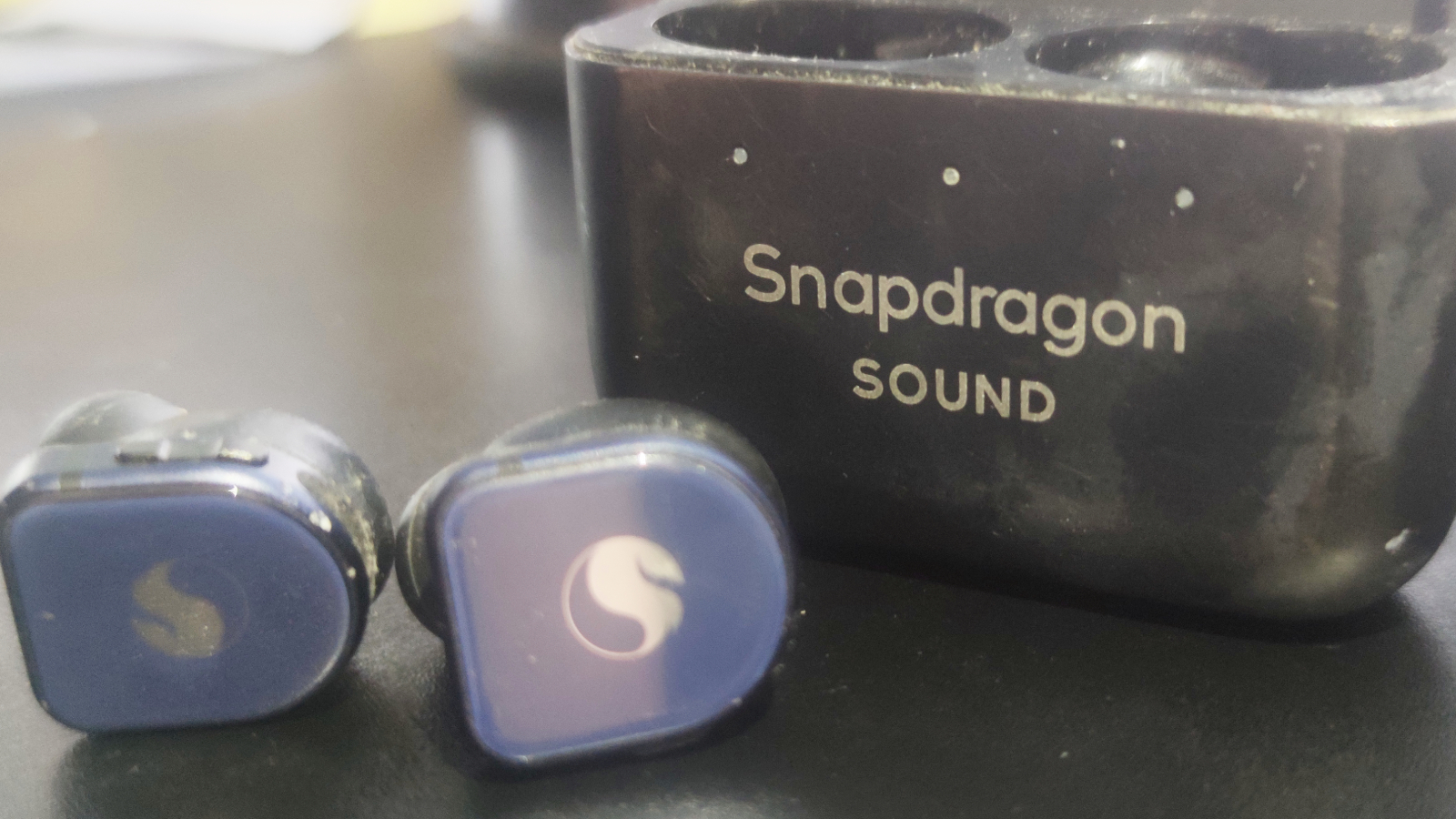What is Snapdragon Sound?

You might have seen the Snapdragon Sound badge displayed on the product page of a new smartphone or headphone you’ve been looking to buy. Maybe you’ve heard about it from a new product launch. Or maybe you’ve seen its promotions on certain music platforms such as Amazon Music.
Wherever you’ve seen it, you’ve probably wondered: ‘what is Snapdragon Sound?’. Well, it’s an audio technology that’s been around for a few years, created by tech component giant Qualcomm, the maker of the chips inside many of the best phones.
In a nutshell, Snapdragon Sound is meant to bring a few useful improvements to the way you listen to audio on headphones or earbuds when they're connected to your phone. This isn’t just for music, though that’s an important part of it; it also affects calls, gaming and more.
So let’s lay it out for you: here’s what you need to know about Snapdragon Sound.
Snapdragon Sound: what is it?

Snapdragon Sound is a way to improve the connection between your smartphone and the wireless earbuds or headphones that you use alongside them.
Qualcomm makes absolutely loads of the tech you’ll find in gadgets. It makes processors for phones, computers, wearables, hearables and smart home devices. It makes Bluetooth and Wi-Fi chips to let your gadgets talk to each other. It designs AI software for things like speech recognition, object detection and image editing.
Snapdragon Sound, in a nutshell, marries together various bits of Qualcomm hardware and software that pertain to headphones and smartphones, to make sure they all work together in harmony.
Sign up for breaking news, reviews, opinion, top tech deals, and more.
To use a metaphor, it’s like a company making sure all employees of a team sit next to each other in the office. This enables them to easily talk to each other without shouting over all the other employees from other teams, and work better together as a result.
You’ll need an audio device and a smartphone that are compatible with Snapdragon Sound to get the benefits, and as with the metaphor above both will then perform better than if you were using the same two gadgets without Snap-Sound. That is to say, this gadget doesn’t diminish the quality of your buds or phone, just builds on it.
Snapdragon Sound: what are the benefits?

As Qualcomm outlines it, there are four key benefits to using Snapdragon Sound-compatible devices.
Firstly is the most basic: music quality. A Snapdragon Sound connection between a phone and headphones ensures lossless streaming – ie, as little quality as possible will be lost as the music is beamed from your mobile to your cans. Snap-Sound also allows for high-res music streaming. This will benefit those streaming Ultra HD tunes from Amazon Music HD or, eventually, Spotify HiFi users.
The second perk is less sexy, but just as important. Snapdragon Sound ensures a more reliable connection between your phone and buds, so you won’t be plagued by audio cutting out, buds glitching during sounds or stuttering during playback. Nothing ruins a musical mood like glitching earbuds.
Next, Snapdragon Sound supports super wideband for voice calls: this means that you’ll be able to hear speech from phone calls more clearly, as it won’t be compressed as much. This doesn’t just affect old-school phone calling, but also Wi-Fi-enabled voice and video chats, too.
Finally, Snapdragon Sound brings a benefit for mobile gamers. When playing games on a Snap-Sound phone, the latency will be as low as possible, so sounds such as nearby gunfire, low-health warnings or the sparkle of power-ups will be beamed into your ears as quickly as possible. Given how important reaction times are in many online mobile games, this could give gamers a slight edge.
An extra bonus – a half-feature, if you will – is that Snapdragon Sound is meant to tweak spatial audio functionality on earbuds or headphones that support it, with head tracking and 'low motion-to-sound latency,’ so your sound space isn’t lagging seconds behind your head movement.
Snapdragon Sound: how can you use it?
You’re going to need two things to use Snapdragon Sound.
Firstly, you’ll need a compatible smartphone. These include a range of flagship phones from various brands, including the Xiaomi 14, Asus Zenfone 11 Ultra, Moto Razr 40, Sony Xperia 1 V and Nothing Phone (2). You can find the full list of compatible devices here.

Next, you’ll have to pick up a compatible pair of earbuds or headphones, of which the list is quite small at the time of writing. Compatible devices include the Cambridge Audio Melomania M100, Bose Ultra Open Earbuds, Bose QuietComfort Ultra Headphones and FiiO FW3. Cheaper options include the EarFun Free Pro 3 and Vivo TWS 4. A full list of compatible devices is available here.
For both phones and audio gadgets, the Snapdragon Sound badge is displayed prominently in marketing materials and on web pages, so look out for that.
Once you’ve got your tech sorted, Snapdragon Sound should be ready to go – in theory. In practice, you might need to be using certain apps for it to make a difference.
For example the music improvements will only be audible if you’re streaming high-res audio, which isn’t available on all music platforms. Spotify, for example, doesn’t stream in a high resolution (though it’s got a high-res subscription tier on the way). Tidal, on the other hand, will benefit immediately from this tech.
Snapdragon Sound: do you need it?
As mentioned earlier, Snapdragon Sound doesn’t make the base audio quality of your earbuds, or Bluetooth standard of your smartphone, obsolete – it just improves on the hardware that’s already there. That is to say, you shouldn’t throw away your thousand-dollar headphones for it.
In fact, it’s not worth getting rid of your gadgets at all for it. Snap-Sound is a useful feature to improve music, but for now it’s mainly something to consider when you’re making your next phone or headphone purchase. Buy something with the Snapdragon Sound badge and you'll be set up for when you buy another compatible device in the future.
Expect to see it become a lot more common in new devices as Qualcomm refines the tech, and as new hi-res audio streaming platforms launch that make lossless streaming even more important.
You might also like
- Sonos announces its first headphones, with noise cancellation and Dolby Atmos – but not the feature we most expected
- I listened to Taylor Swift’s new songs on a 22-year-old Sony Walkman and it was a tortured experience I won’t try again
- I switched through all the best music streamers for a month to compare them – here are the 7 biggest things I learned

Tom Bedford joined TechRadar in early 2019 as a staff writer, and left the team as deputy phones editor in late 2022 to work for entertainment site (and TR sister-site) What To Watch. He continues to contribute on a freelance basis for several sections including phones, audio and fitness.